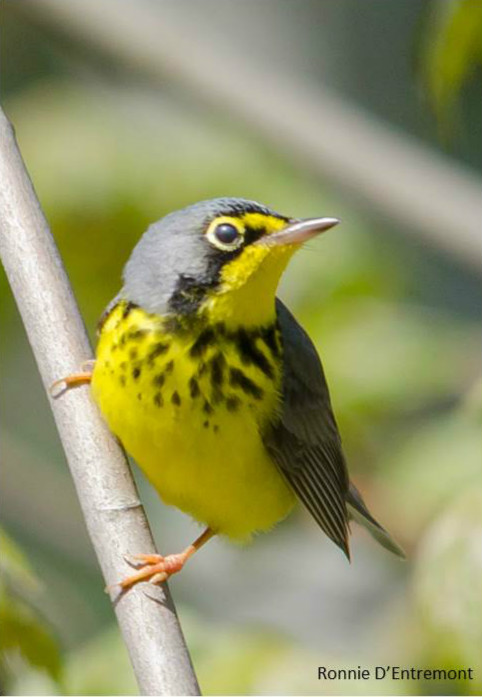The Canada Warbler is a small migratory songbird that breeds across Canada’s Boreal region (including the Maritimes) and the northern USA. These warblers undertake long-distance migrations between these breeding grounds and their wintering grounds in the Andean subtropical forests of northern South America.
Breeding and Life History
Canada Warblers have one of the shortest recorded breeding periods of any North American songbird. Males arrive on their breeding grounds in the latter half of May and females usually arrive a few days later. Males sing to defend their territories from other males and to attract females. Females begin nest-building by early June.
Canada Warbler nests are well-concealed and thus very hard to find. They are placed on or near the ground, in ares of dense shrubs, often among tall ferns and tree stumps. Egg-laying follows with clutch sizes averaging 4-5 eggs that are incubated by the female for 11-12 days. Eggs hatch by late June to early July and both parents feed the young nestlings. After 8-9 days of growth the young leave the nest, although they are not capable of flight at this time. After 2-3 additional days of growth the young are able to fly and continue to grow, reaching full size within 2 weeks of their departure from the nest. At this point they fully self-sustaining.
Learn More
 Learn more about the Canada Warbler: Cornell Lab of Ornithology, Audubon Society, Boreal Songbird Initiative
Learn more about the Canada Warbler: Cornell Lab of Ornithology, Audubon Society, Boreal Songbird Initiative
Learn more about Canada Warbler recovery in Canada: Species at Risk Public Registry, Recovery Strategy for the Canada Warbler in Canada



